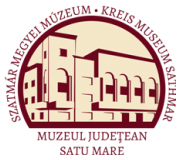Marcu-Istrate, Daniela - Rusu, Adrian Andrei - Szőcs Péter Levente (szerk.): Arhitectura religioasă medievală din Transilvania 3. (Satu Mare, 2004)
Maria-Emilia Crîngaci-Ţiplic - Zeno K. Pinter - I. Marian Ţiplic: Biserica evanghelică din Ruja. Studiu istoric şi arheologic
Maria-Emilia CrÎNGACI-Ţ/PLIC, Z.-K. PlNTER, l.-M. ŢlPlIC The Lutheran Church of Ruja (g. Roseln, h. Rozsonda): Historical and Archaeological Study (Abstract) During the Middle Ages, the village of Ruja was part of Kosd-Rupea Kapitel (Kosder-Reps Kapitel) in ecclesiastical sense and of the district of Cincu (Schenk Stuhl) in administrative point of view. Today, the village is in the County of Sibiu, near the town of Agnita. Ruja is mentioned first in the written documents, together with the villages of Mălăncrav, Stejăreni, Roandola, Criş, Floreşti and Noiştat, in the year 1349. In the present, the church has a long rectangular nave, a big choir with polygonal ending, and an impressive tower on the western part (fig. 7, 15). The oldest architectural elements are: the Gothic stone-frame of the northern portal (fig. 9), and the Gothic vault of the choir (fig. 8). On the northern wall of the nave, traces of brackets or capitels, belonging to former pillars, can be observed, indicating that the church was a basilica earlier, with a side-aisle. The former pillars separated the main-nave from the aisle. The western tower of the church has 5 levels; in the first phase, the first level of the tower had no opening to the outside. The access to this level and to the second level was made through a staircase constructed in the width of the walls. This fact indicates that a former donjon was transformed to the church tower. The archaeological excavation proposed to establish the chronology of the tower and of the church. In this sense, two trenches were opened: Cl (4x4 m), on the northern side of the church and the tower, and C2 (2x1,5 m), inside the tower. In trench Cl, 21 graves were discovered, among which, only the grave M15 had a coin minted by loan of Hunedoara. This grave, however, doesn’t belong to the oldest layer of burials. This first layer is represented by grave M23 (fig. 17b), disturbed on the head-side by the foundation of the tower, while its left side is 20 cm under the foundation of the church. In trench C2, 2 more graves were discovered: grave M16, belongs to a new-born child, the bones being in very bad state of preservation, and grave Ml 7, belonging to an adult, disturbed on the upper side by the foundation of the tower (fig. 18ab). Due to the limited area of excavation, the research could not establish the date of construction of the donjon and of the church, and could not reconstruct the evolution of the building phases. The results, however, allowed to identify the basilica-phase and to discover the donjon elements at the tower. 192
